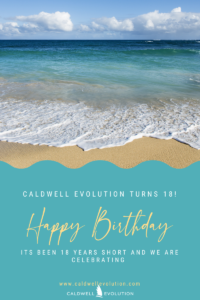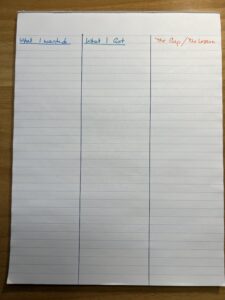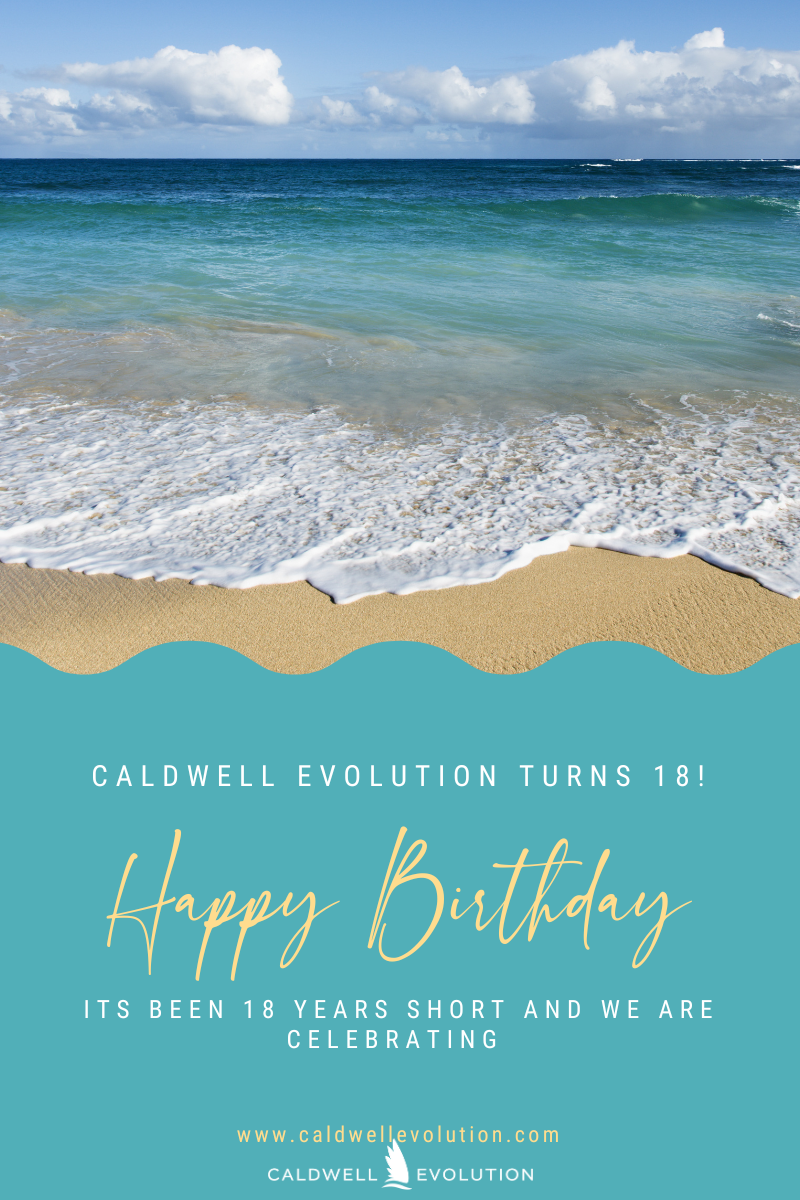A New Fiscal Year
July 1 is the beginning of a new fiscal year for Caldwell Evolution and yearly planning is on the calendar. Micro tasks have come to my rescue again. Yearly planning can be fun, however it can also be overwhelming. Using micro tasks and a dedicated planning process, I was able to get through the process, and get excited for the year, without feelings of overwhelm bogging me down. The process I use is very effective and when paired with micro task strategy, it also be very powerful.
The Yearly Planning Process
The yearly planning process for me involves a review of goals and achievements from the past year, analysis of what worked and what didn’t, setting goals for the following year and some KPI’s (key performance indicators) to go with them. The process I use comes from a coaching program in which I invested during the covid-19 pandemic. I learned a 3 step process from Fabienne Fredrickson, founder of Boldheart.
The process works well if documented on a three column table. Take a piece of paper and divide into three vertical columns. At the top of column one write the title “What I Wanted”. For column two write “What I Got”. Finally, at the top of column three write ‘The Gap, The Lesson”
Step One: What Did YouWant/Desire?
Step One is carefully listing what you had wanted for the year. (I am assuming you are also using this for yearly planning. If not, use whatever time frame within which you are planning.) When planning for the previous year, what were you hoping or expecting to attain during the year. No judgement, just list each item on your table in the first column to the left.
Step Two: What Did You Get?
In the second column, titled “What I Got”, write down beside items in column one what actually happened by the end of the year. Did you expect $100,000 in revenue? What did you actually achieve? Were you hoping to travel to a hot vacation location? Did you travel? Again, no judgement; at this point just write the facts. Column two is the first of two reality checks. Be honest.
Step Three: What is the Gap/What is the Lesson?
In the third column, beside the items in column one and two, write the difference between what you wanted and what you got. In addition, what did you learn from that difference (gap)? What was the lesson? You may have achieved or received more than you wanted or desired. Or you may have achieved less. In both there is something to be learned about what you did to make it happen or what you did that prevented your goal from being achieved. This is your second reality check. Look at the habits or behaviours or things you did, in other words had control over, that made the desired achievement happen, or not happen. The high performance athletes review this as “How did I control the controllables to set myself up for success?”
Using Micro Tasks
This is where I find the micro tasks most helpful. Writing all that down can get tedious for me. It takes some brain power, thoughtfulness and time. If I am not careful, the process doesn’t actually get finished and I never fully commit to the key performance indicators. By breaking each step down, I completed not only this tedious part of yearly planning, but the entire yearly planning process over the course of a week. Breaking down into micro tasks meant using really short work sprints.
Micro tasks can be as small as 5 minutes. For this task, I worked in 20-30 minute sprints. Because I had written goals for fiscal year 2023, I simply logged those in column one. That was one task. Column two took a bit more work since I had to review what was actually achieved over the year. That took a couple of time sprints. Finally, column three is more about analysis. Those I tackled one item at a time and gave myself permission to get up and do something else in between items.
With the columns filled, my next task was to identify what I want to achieve in fiscal year 2024, what success would look like and what the key performance indicators would be. Again, I broke the process into small tasks by tackling each desired achievement as a separate task.
The Result
One of the benefits of working with micro tasks is the built in reinforcement the strategy offers. When each task is completed, your brain registers an accomplishment and with it, all the lovely positive chemicals that go with that. Accomplishments don’t have to be huge. They can be small. Using micro tasks to avoid feelings of overwhelm, creates more accomplishments.
Are we fooling our brains? Maybe, however, sometimes that’s exactly what has to happen to get through a bigger project. Breaking a big project into a series of micro tasks can be a game. Each step completed is worthy of a celebration, check in a task list, high five and a cheer. String together those micro tasks and the project is done.
Yearly planning? Check.



Leave a Reply